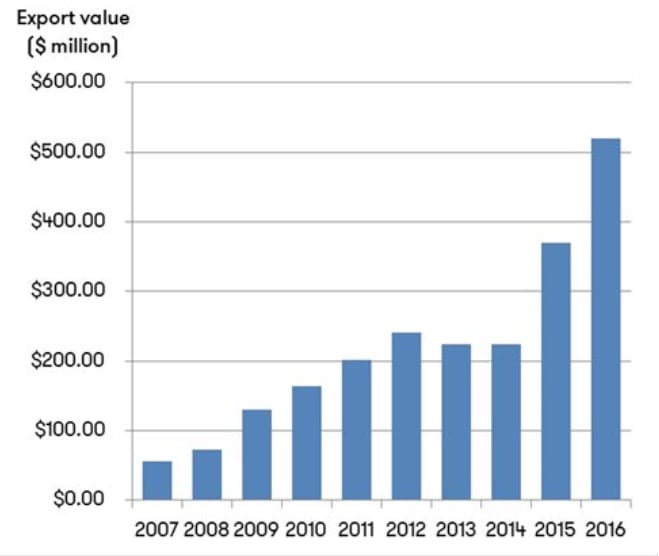According to Mike Stone, executive officer of Murray Valley Winegrowers, which represents 350 producers in northwest Victoria, Wei Long Grape Wine is taking a “neat and tidy” approach to harnessing Australia’s relaxed free-trade agreement with China.
He said his members supported the Chinese company’s move, which was likely to deliver business and jobs to the area.
Last September, Wei Long announced it would spend A$13.4m (US$10.3m) on buying three Australian vineyards, marking the latest in a series of Chinese investments in the Australian wine industry.

The Grand Dragon wine brand operator also intends to spend some A$80m on constructing a new winery to process 60,000-80,000 tonnes of grapes a year, though its plans are currently tied up in red tape.
Speaking to AFR, Wei Long’s general manager of Australian operations, Bruno Zappia, said he was confident that planning issues would be resolved in time for the 2019 vintage.
He said Wei Long’s business model was to “feed its own market” by producing wine in the area around Mildura before exporting it to China.
The company has faced opposition from local winemakers, leading in part to a current hold on planning permission. One of these, Zilzie Wines, said its objection to the plan was based purely on concerns over the impact of the winery’s development, such as increased traffic around the plant, rather than any fears of increased competition. It said it would not appeal a ruling in Wei Long’s favour.
Stone said the Chinese company’s plans amounted to “one of the biggest infrastructure investments in the Australian wine industry” and he was “very keen to see it happen”.
“The Australian wine industry has been in the doldrums for the last 10 years, and growers in the big inland regions like ours have had it particularly tough,” he said.
“Our area supplies the popular segment, which accounts for a major portion of Australian wine exports. We are playing in a very large pond overseas.”
If Wei Long’s plans come to fruition, vineyards around Mildura and Swan Hill would likely see increased demand for their grapes and labour.
“I doubt they will provide all their own fruit so they will probably need supplies from other wineries,” Stone said, adding that he expected Wei Long to call on other local services, including construction, harvesting and freight, for support.
Demand in China for Australian wines has increased almost tenfold in a decade, boosted by growing middle-class affluence and spiking sharply after a free-trade agreement that lowered import tariffs to 5.6% from 14% came into effect in 2015.
According to Wine Australia figures, 2006 exports to China were valued at A$56m and involved 340 exporters. Today, this figure amounts to A$520m, with 1,300 Australian companies shipping wine there.
If and when Wei Long joins this legion, it will be the first to do so under a vertically integrated model, Stone believes.
“This is the first instance I know of [regarding wine],” he said. “As I understand it Chinese companies have approached local citrus growers and said they will send teams out to harness their entire crop. That’s a little different, though the concept is roughly the same.”
At this stage, he is not aware of other companies interested in adopting or adapting Wei Long’s business model, but would probably welcome such an eventuality.
But first it must be seen if the Chinese company will manage to cut through the red tape.
